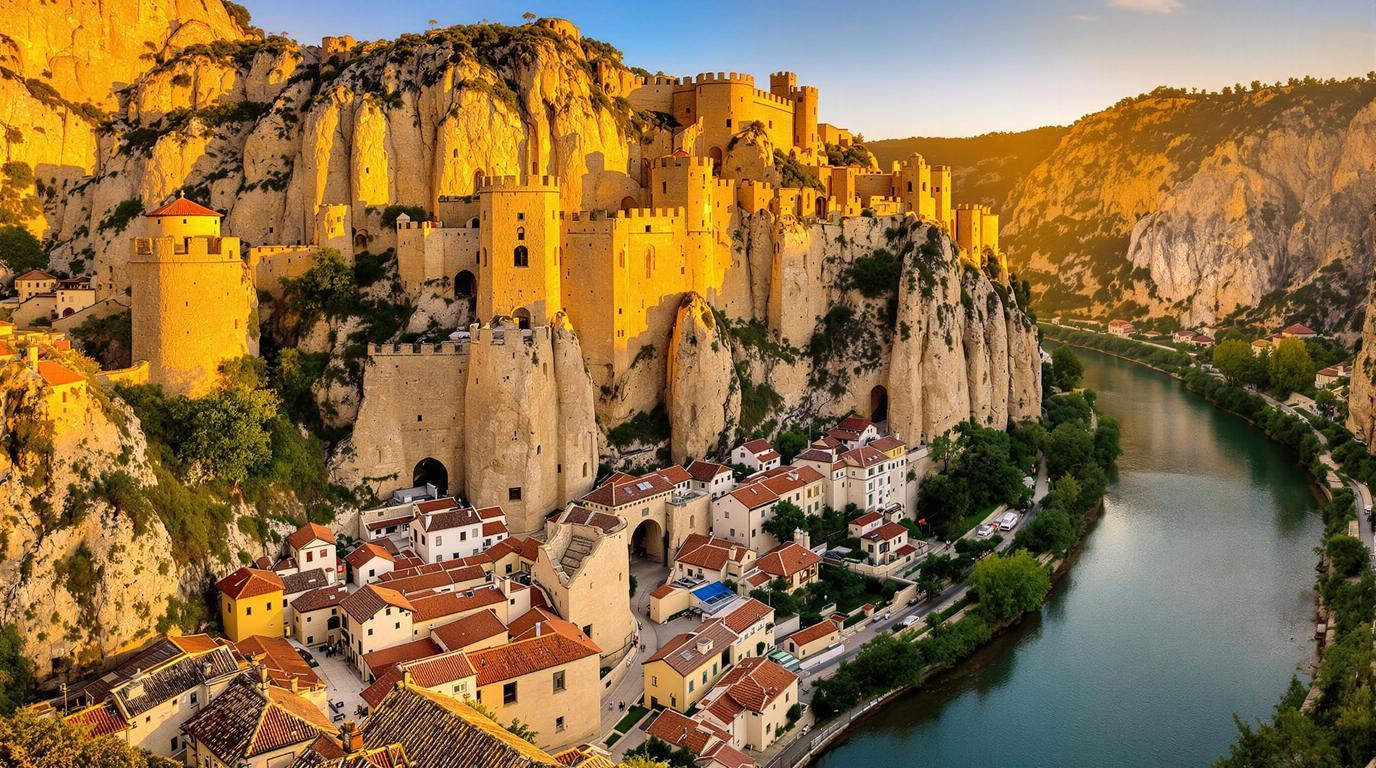France’s spectacular medieval village perched 40 meters above a winding river isn’t just another pretty postcard scene. Angles-sur-l’Anglin harbors 15,000-year-old prehistoric treasures alongside its medieval splendor, creating a remarkable time-travel experience in central France that fewer than 400 people call home.
A fortress that defies gravity and time
The imposing 12th-century fortress ruins dominate Angles-sur-l’Anglin’s skyline, dramatically positioned atop limestone cliffs. These ancient stones have witnessed nearly a millennium of French history, from medieval knights to revolutionary upheavals. The panoramic views from this strategic perch reveal the Anglin valley stretching toward the horizon – a vista that hasn’t changed substantially since Eleanor of Aquitaine’s era.
Local historian Pierre Dumont explains:
“Our fortress represents the perfect marriage between human ingenuity and natural defense. The builders utilized the cliff’s natural protection, creating an impregnable position that controlled this entire region.”
Where medieval streets whisper centuries-old secrets
Wandering through Angles-sur-l’Anglin’s narrow lanes feels like stepping through a portal to medieval France. Flower-lined cobblestone streets wind between honey-colored stone houses, each curve revealing another postcard-worthy scene. The village’s official designation as one of the “Most Beautiful Villages of France” is immediately evident in these meticulously preserved streetscapes.
Unlike Provence’s hidden truffle villages, Angles-sur-l’Anglin celebrates a different artisanal tradition – the distinctive “Jours d’Angles” embroidery that once supported hundreds of local families. Workshops scattered throughout the village continue this delicate needlework tradition, offering visitors a glimpse into rural French craftsmanship.
The 15,000-year-old masterpiece hidden in plain sight
What truly distinguishes Angles-sur-l’Anglin from countless other charming French villages is the extraordinary Roc-aux-Sorciers. This prehistoric site contains some of Europe’s most remarkable Magdalenian period rock carvings – a 15,000-year-old frieze depicting bison, horses, and human figures with astonishing artistic sophistication.
While the original site remains closed for preservation, the interpretation center uses cutting-edge technology to transport visitors deep into prehistory. These carvings represent a treasure nearly as old as Australia’s 65,000-year-old wilderness secrets, yet remain relatively unknown to international travelers.
A riverside haven where time slows down
The tranquil Anglin River forms the village’s lower boundary, creating a peaceful atmosphere that contrasts with the dramatic fortress above. Historic mills and stone bridges dot the riverbanks, while the crystal-clear waters reflect medieval architecture and verdant hillsides.
Unlike Norway’s dramatic fjords, this river valley offers an intimate scale that encourages slow exploration. The riverside path provides photographers with frame-after-frame of quintessential French countryside vistas.
A culinary corner of authentic France
The village’s modest selection of restaurants reveals authentic regional cuisine without tourist pretensions. Le Goût Des Mets and L’Amaretto showcase local specialties including Poitevin stuffed cabbage and regional goat cheeses like chabichou, paired with organic wines from nearby vineyards.
Longtime resident Marie Bouvier notes:
“Our food represents generations of tradition and local ingredients. Unlike tourist-focused destinations, we cook the same dishes for visitors that we serve at our own family tables.”
Beyond the village: heritage-rich day trips
Angles-sur-l’Anglin provides an ideal base for exploring central France’s underappreciated treasures. The UNESCO-listed Saint-Savin-sur-Gartempe Abbey with its remarkable frescoes lies just 14km away, while La Roche-Posay’s medieval donjon and thermal spas offer contrasting experiences within a short drive.
Unlike Japan’s famous bamboo forests, these French landscapes remain refreshingly uncrowded, even during summer months when the fortress hosts medieval reenactments that bring history vividly to life.
Angles-sur-l’Anglin represents France at its most authentic – a place where prehistoric art, medieval grandeur, artisanal craftsmanship, and natural beauty converge in perfect harmony. This village doesn’t just preserve the past; it invites visitors to become temporary participants in a living historical tapestry that continues to evolve after fifteen millennia.
